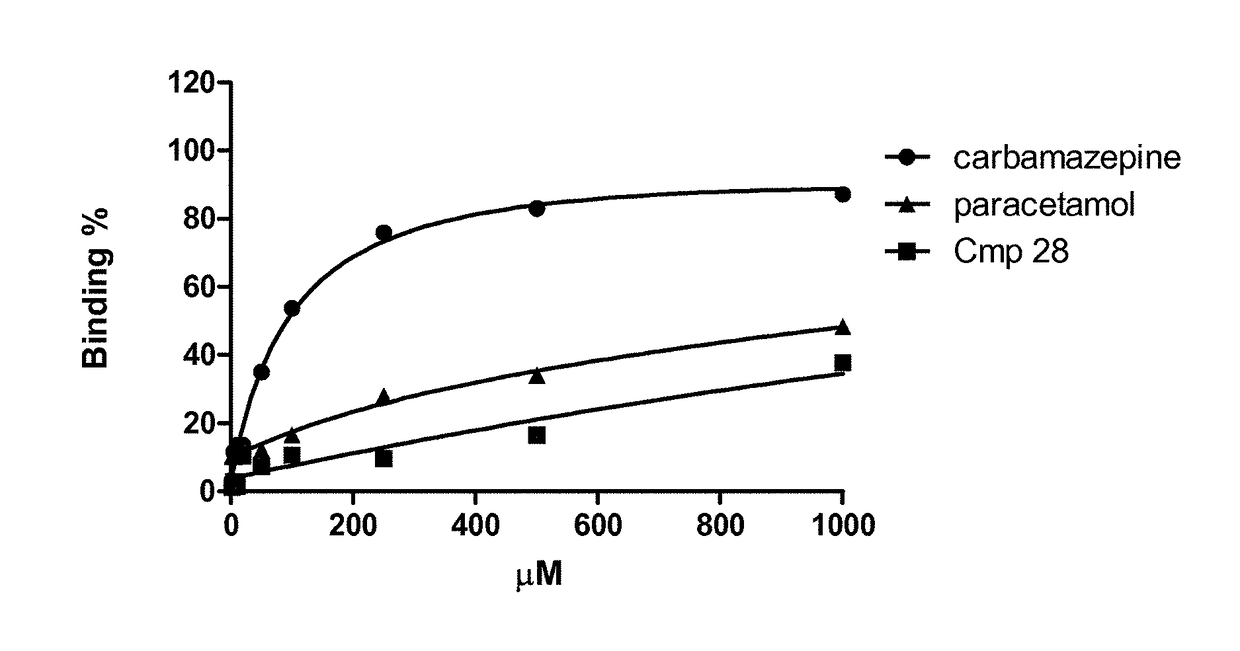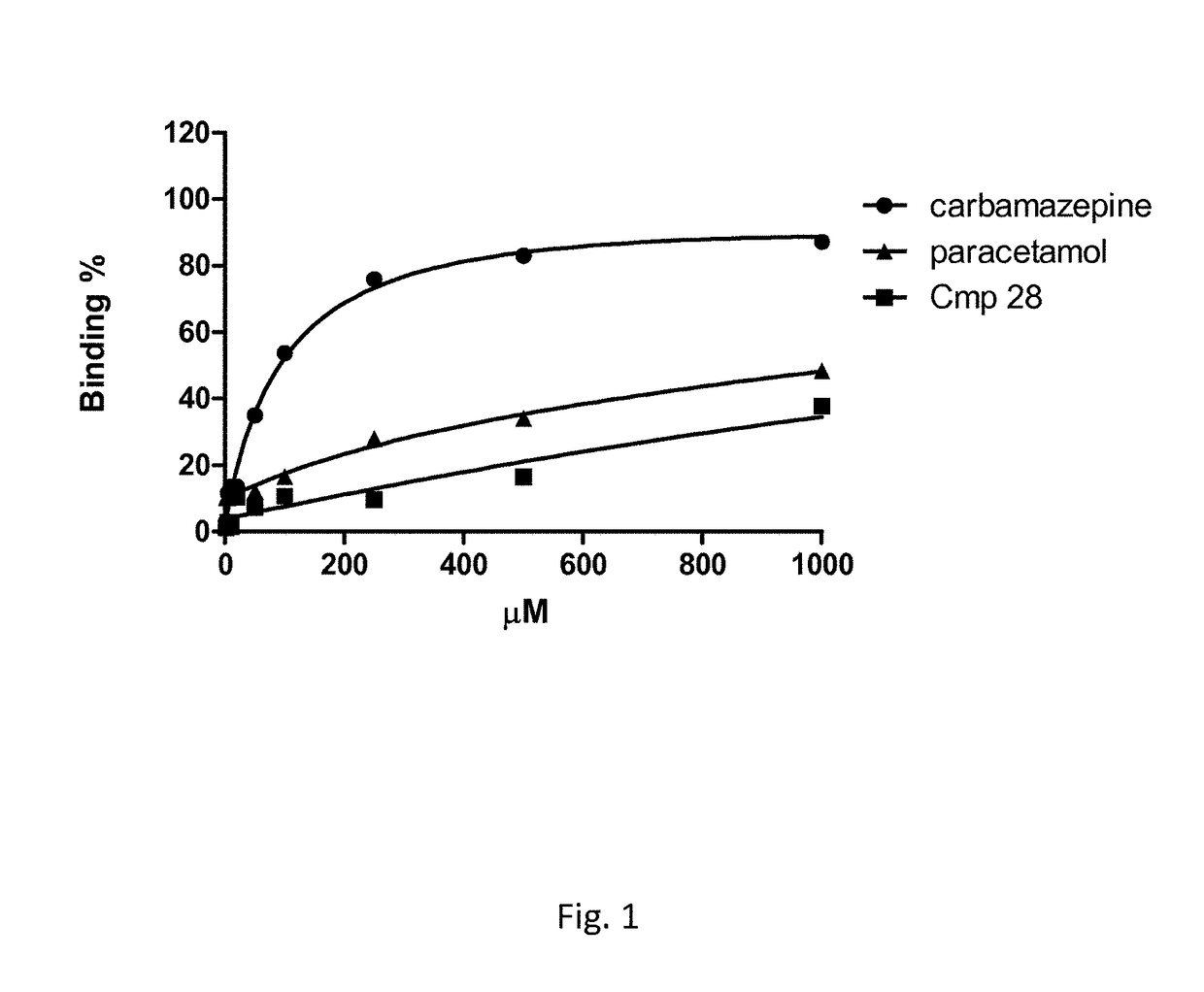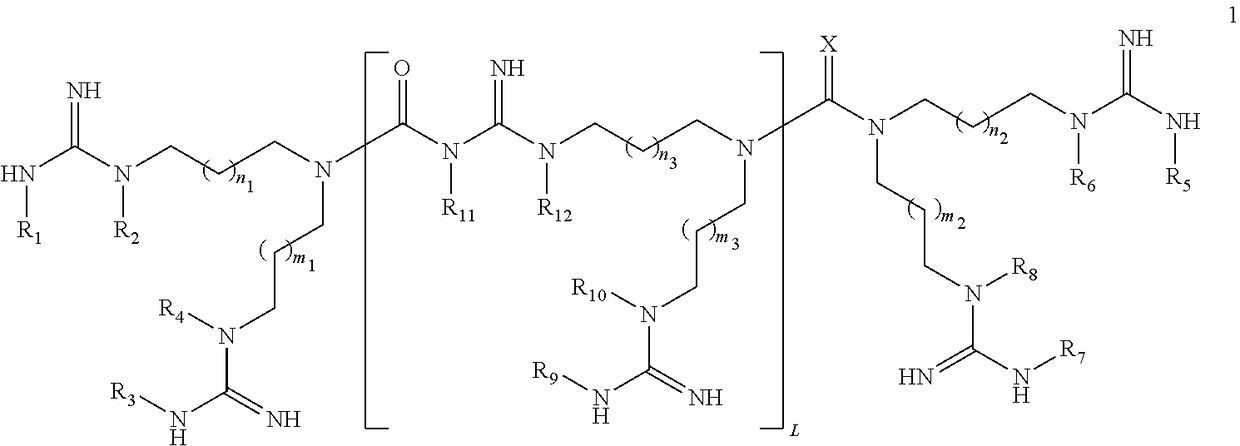Linear guanidine derivatives, methods of preparation and uses thereof
a technology of guanidine and derivatives, applied in the field of linear guanidine derivatives, can solve the problems of creating a huge socio-economic burden on the public healthcare system
- Summary
- Abstract
- Description
- Claims
- Application Information
AI Technical Summary
Benefits of technology
Problems solved by technology
Method used
Image
Examples
example 1
[0150]All commercially available chemicals were used as purchased. DCM was dried over sodium hydride. THF were dried over Na / benzophenone prior to use. Anhydrous DMF was used as purchased. Anhydrous reactions were run under a positive pressure of dry N2 or argon.
[0151]Chromatographic separation of final products were conducted using a Polaris C18 column (150-4.6 mm, 5 pm particle size) at a flow rate of 0.8 mL min-1 with a mobile phase composed of 50% CH3CN / 50% H2O-formic acid 0.1%.
[0152]1H-NMR and 13C-NMR were measured on a 400 mHz spectrometer and are reported in parts per million (δ scale) and internally referenced to the CDCl3 or CD3OD signal, respectively at δ 7.24 ppm and 3.31 ppm. Chemical shifts for carbon are reported in parts per million (δ scale) and referenced to the carbon resonances of the solvent (CDCl3 at δ 77.00 and CD3OD at δ 49.00 ppm). Data is presented as follows: chemical shift, multiplicity (s=singlet, d=doublet, m=multiplet and / or mult...
example 2
Synthesis of Representative Compound 28
Synthesis of Compound 28
[0161]
Synthesis of Boc-Protected Guanidine 20:
[0162]
[0163]1,8-diaminooctane 18 (6.0 g, 41.67 mmol) was dissolved in half solution of CH3CN / MeOH 9:1 (75.0 mL) and 1,3-Bis(tert-butoxycarbonyl)-2-methyl-2-thiopseudourea 19 (4.036 g, 13.89 mmol) in the other half (75.0 mL). The two solutions were mixed and the temperature was increased to 40-50° C. DIPEA (3.0 mL) was added to the reaction mixture and it was stirred 12 h. The reaction mixture was then concentrated and the crude product was purified by flash chromatography (CH3CN / MeOH / Et3N 8:2:1) to afford compound 20 as a pale yellow oil (yield 89%). 1H NMR (CDCl3) δ (ppm):1.30 (m, 12H); 1.49 (s, 18H); 2.67 (t, 2H, J =7.0 Hz); 3.40 (m, 2H); 8.28 (bs, 1H); 11.49 (bs, 1H).LCMS m / z (ES+)=387 [M+H]+
Synthesis of 1-azido-8-bromooctane 21:
[0164]To a solution of dibromooctane (2.0 mL, 10.9 mmol) in DMF (2.0 mL), NaN3 (354.3 mg, 5.45 mmol) was added and the reaction mixture was stirre...
example 3
Synthesis of Representative Compound 30
Synthesis of Compound 30
[0178]
Synthesis of Primary Amine 29
[0179]
[0180]A 100 millimolar solution in dry THF of compound 25 (54.3 mg, 0.07 mmol) was heated at reflux for 12 h. Then, the mixture was diluted with AcOEt and washed with NaHCO3, water and Brine. The combined organic layers were dried over Na2SO4 and concentrated. The crude product was purified with a silica gel column chromatography (DCM / MeOH 9:1), affording compound 29 with a yield of 30%. 1H NMR (CDCl3) δ (ppm): 0.22 (d, 4H, J=4.8 Hz); 0.44 (d, 4H, J=7.6 Hz); 1.02 (m, 2H); 1.27 (m, 48H); 1.44 (s, 36H); 1.46 (s, 36H); 2.83 (t, 4H; J=7.2 Hz); 3.27 (m, 8H); 3.37 (m, 4H); 3.51 (m, 4H); 7.96 (s, 1H).8.26 (s, 1H). LCMS m / z (ES+)=773.5 [M+2H]2+; 516.2 [M+3H]3+
Synthesis of Final Compound 30
[0181]
[0182]Compound 29 (17.2 mg, 0.01 mmol) was dissolved in DCM dry (1.8 mL) and TFA 10% (0.2 mL) was added. The reaction mixture was stirred at room temperature for 10 h.
[0183]Then the solvent was eva...
PUM
| Property | Measurement | Unit |
|---|---|---|
| Composition | aaaaa | aaaaa |
| Therapeutic | aaaaa | aaaaa |
| Antimicrobial properties | aaaaa | aaaaa |
Abstract
Description
Claims
Application Information
 Login to View More
Login to View More - R&D
- Intellectual Property
- Life Sciences
- Materials
- Tech Scout
- Unparalleled Data Quality
- Higher Quality Content
- 60% Fewer Hallucinations
Browse by: Latest US Patents, China's latest patents, Technical Efficacy Thesaurus, Application Domain, Technology Topic, Popular Technical Reports.
© 2025 PatSnap. All rights reserved.Legal|Privacy policy|Modern Slavery Act Transparency Statement|Sitemap|About US| Contact US: help@patsnap.com



